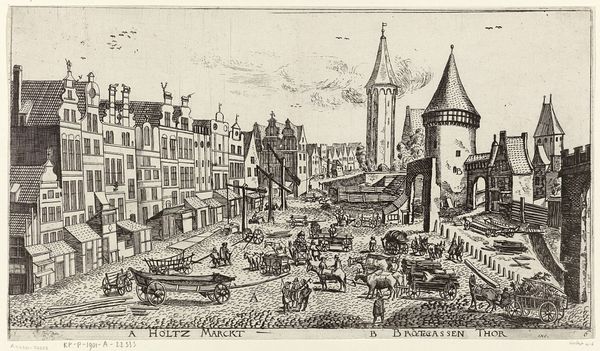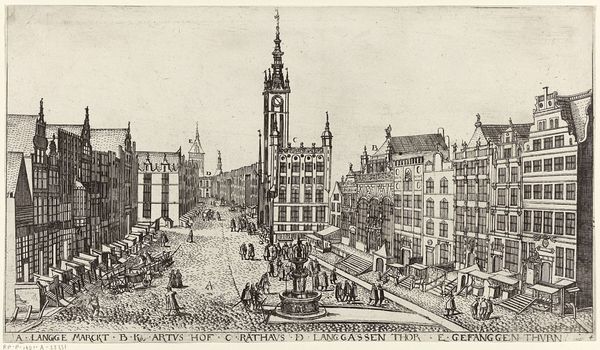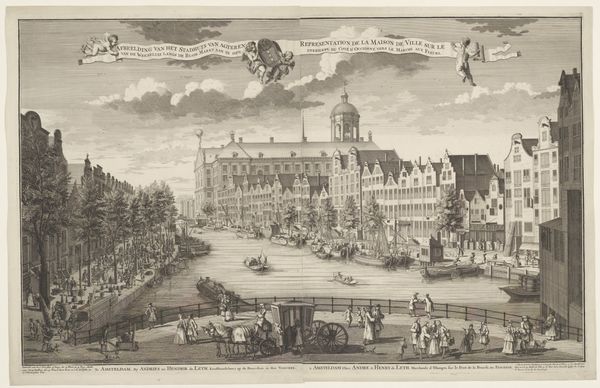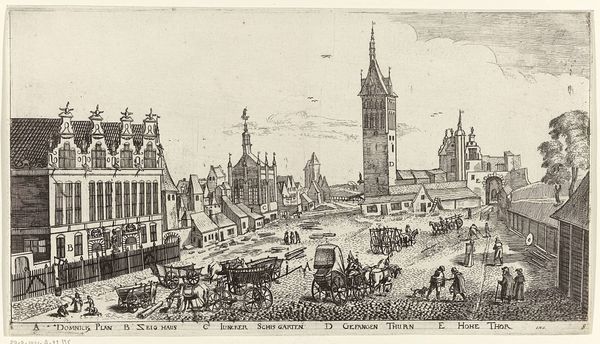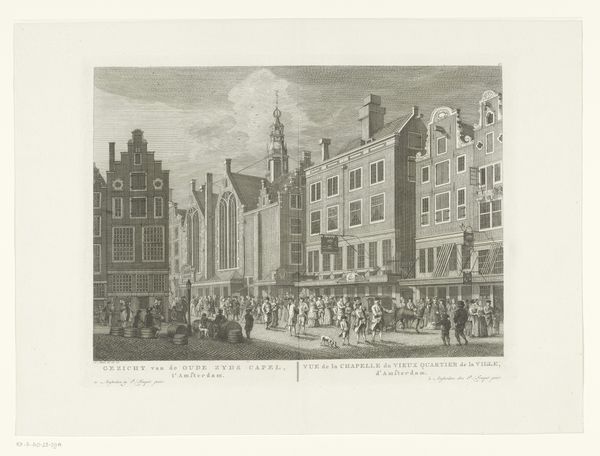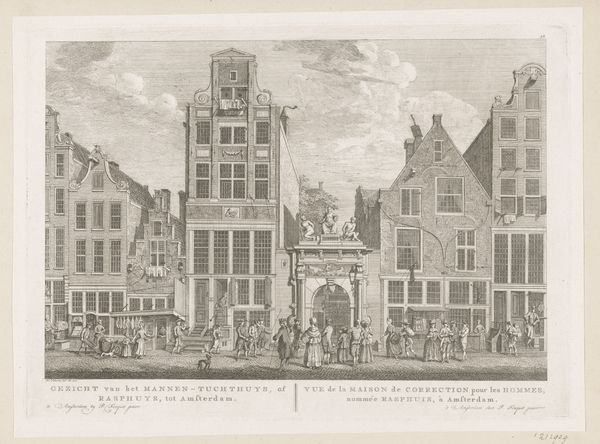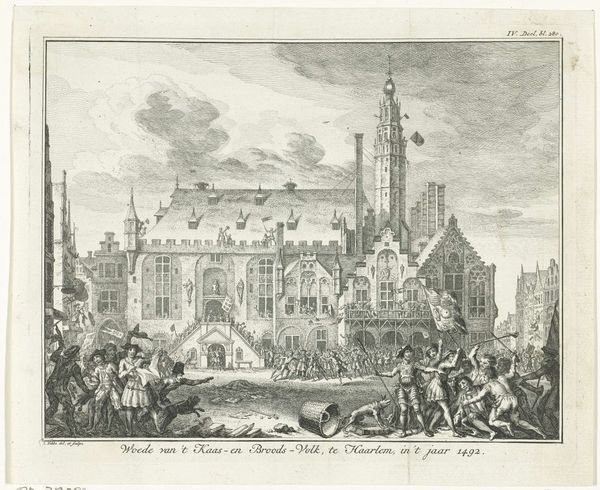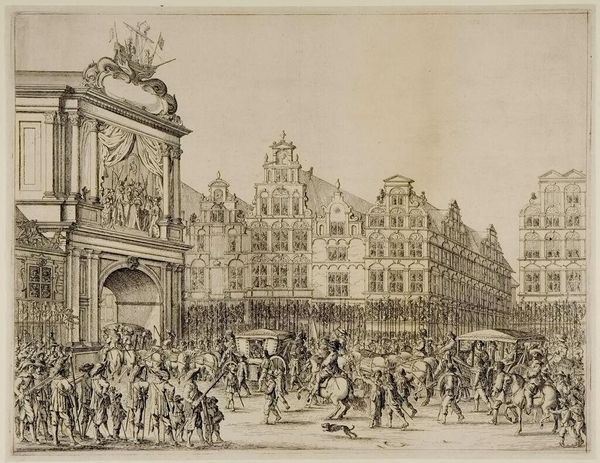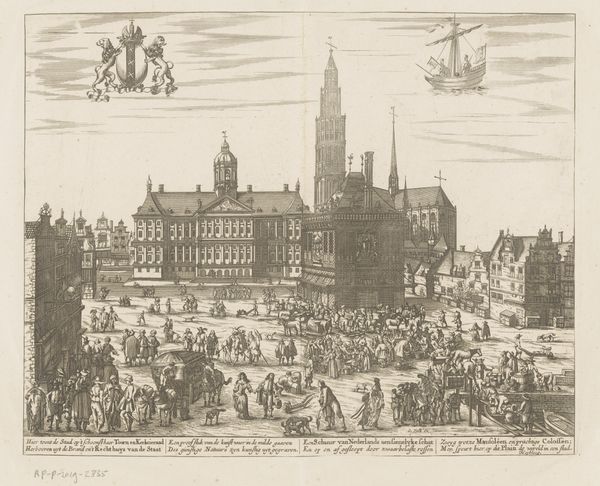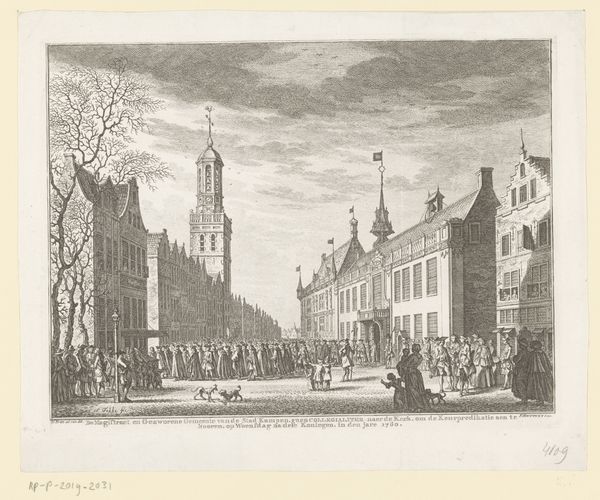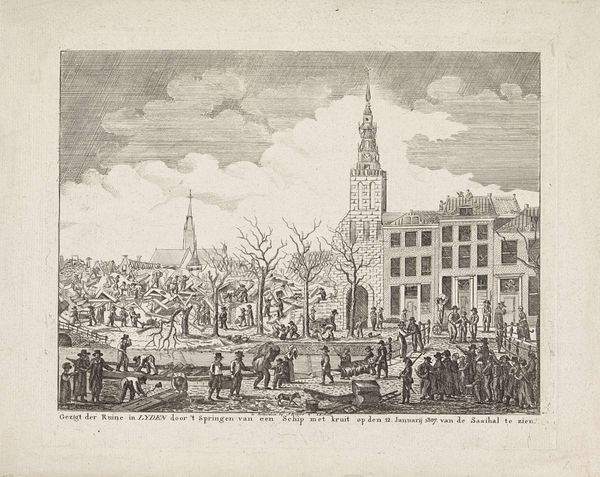
Gezicht op de Gouden Poort aan het einde van de Langstraat in Danzig 1625
0:00
0:00
aegidiusdickmann
Rijksmuseum
drawing, print, ink, pen, engraving
#
drawing
#
baroque
#
pen drawing
# print
#
ink
#
pen
#
cityscape
#
genre-painting
#
street
#
engraving
Dimensions: height 171 mm, width 322 mm
Copyright: Rijks Museum: Open Domain
Editor: We’re looking at “View of the Golden Gate at the End of Langstraat in Danzig” from 1625 by Aegidius Dickmann. It's rendered in pen and ink. The level of detail is impressive, especially the way he captures the bustle of the city. It almost feels like a snapshot, but of course, far more deliberate. What's your take on it? Curator: This engraving gives us a vital glimpse into 17th-century Danzig, now Gdańsk in Poland. Notice how the Golden Gate isn’t just a landmark, but an active participant in urban life. The artist meticulously documents the social strata, from the affluent riding carriages to commoners on foot, illustrating a society deeply rooted in commerce and hierarchy. Editor: It really emphasizes the gate. Was this a particularly significant monument for the city? Curator: Absolutely. It represents prosperity, civic pride, and the gateway to new opportunities. Think of it as a carefully crafted piece of propaganda designed to project power. Danzig, at that time, was a major port city, a hub of trade. Images like these helped solidify its reputation and attract merchants, investors, and immigrants. Look at how the architecture is given such prominence. Editor: It's interesting how much weight an image can carry in shaping the perception of a city. I hadn't considered it as a form of "urban marketing" from so long ago. Curator: Precisely! It makes you think about how images of cities are used today to create specific narratives, doesn’t it? Editor: It really does! Thanks for sharing your perspective, it’s shifted the way I view cityscapes from this period.
Comments
No comments
Be the first to comment and join the conversation on the ultimate creative platform.
